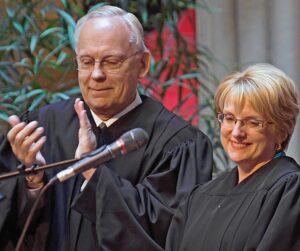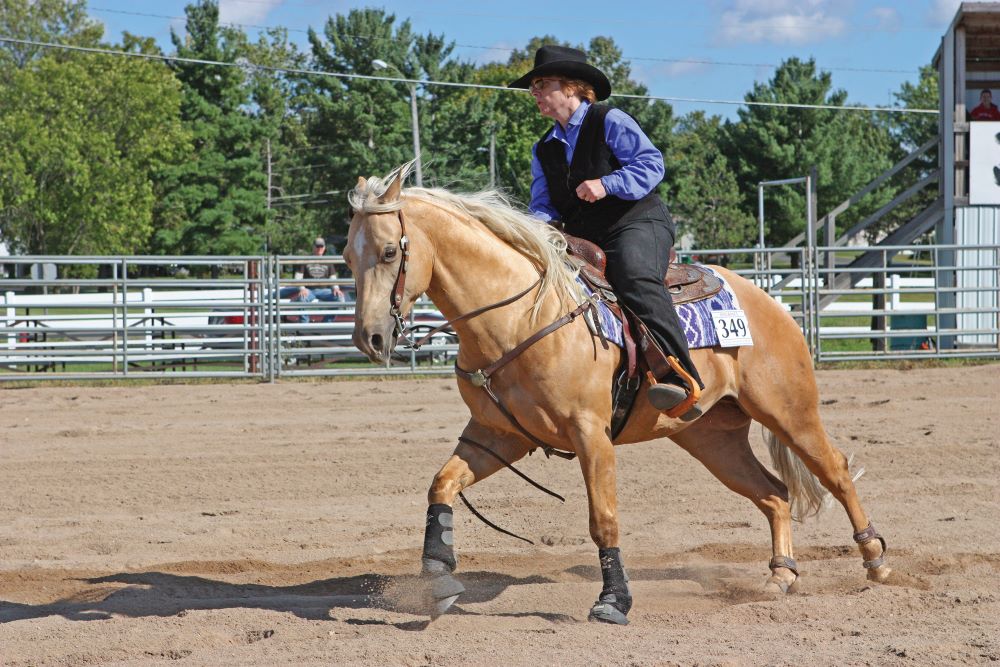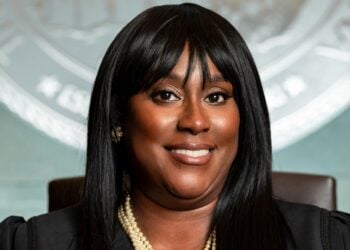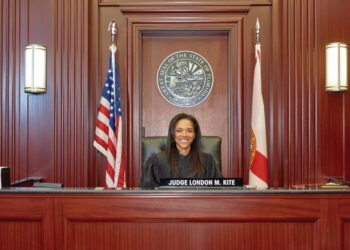On October 1, 2023, after more than 13 years, Chief Justice Lorie Skjerven Gildea stepped down from her position as chief justice of the Minnesota Supreme Court. Gildea was the second woman to hold the position of chief justice and the third longest-serving chief justice in Minnesota history. As her time on the Court came to an end, Gildea reflected on her path to the Court and the experiences that shaped her tenure.
Gildea was born in Plummer, a small town of 292 people in northwest Minnesota. Gildea’s father, Roger, lived on a farm outside of Plummer, having moved there from Park River, North Dakota. Gildea’s mother, Charlotte, grew up in Plummer where her father worked as the town’s blacksmith.
As Gildea likes to say, in a town as small as Plummer, “everybody works or nothing does.” Roger worked as a gas truck driver and Charlotte worked as a bookkeeper. Roger and Charlotte also took on active roles within their small community. Roger served as a volunteer firefighter for decades. Charlotte was a member of the school board—the only woman at the time—and used her position to advocate for girls’ participation in sports. The investment and care her parents demonstrated toward their small town instilled in Gildea the importance of service to her community.
Although Gildea did not know any attorneys—there were no lawyers in her family or in Plummer at the time—she does not remember a time when she wanted to be anything other than an attorney. Her mother liked to say it was because Gildea liked to argue so much. Gildea was so eager to start law school, she took extra courses at the University of Minnesota Morris so that she could graduate in three years with her bachelor’s degree in political science. She then headed to Washington, D.C. to attend Georgetown University Law Center.
After law school, Gildea worked at Arent Fox in Washington, D.C. before returning to Minnesota to work in the University of Minnesota’s Office of General Counsel. Although she enjoyed her work in private practice and at the University, Gildea knew that she wanted to be a prosecutor. She applied for several prosecutor positions without success, yet she remained undeterred. She used the professional development leave that the university provided to serve as a special prosecutor for the City of Minneapolis and Hennepin County.
In addition to applying for prosecutor positions, Gildea applied to be a state district court judge. She loved being in the courtroom and believed she could make a difference on the other side of the bench. But she remained hopeful that she eventually would work as a prosecutor.
In 2004, now-Senator Amy Klobuchar hired Gildea as an assistant Hennepin County attorney. In that role, Gildea prosecuted cases involving vulnerable adults who were subject to guardianship or conservatorship. These cases had a significant impact on Gildea because she witnessed the neglect and abuse that vulnerable adults suffered at the hands of those responsible for protecting them.
In 2005, after just a year as a prosecutor, there was an opening on the district court bench. Initially, Gildea planned not to apply for the judgeship so that she could get more experience as a prosecutor, the job she sought for so long. But with the encouragement of her husband, Andrew, she decided to apply and was appointed. As Gildea notes, “It’s funny how life takes you places.”
As a district court judge, Gildea was struck by the relentless volume of cases that judges faced. She also was impressed with how the district court staff worked tirelessly to provide service to the public.

After only a few months as a district court judge, life once again took her in a different direction. On January 11, 2006, Gov. Pawlenty appointed Gildea as an associate justice on the Minnesota Supreme Court. She was appointed to fill the seat of Russell A. Anderson, who served as an associate justice before being appointed as chief justice. When Gildea joined the court, Chief Justice Anderson became an instant mentor to her. Chief Justice Anderson emphasized the importance of collegiality among the justices and refused to allow self-importance to interfere with the Court’s work.
On July 1, 2010, Gov. Pawlenty appointed Gildea as chief justice. As the administrative head of the Judicial Branch, she used her experience as a prosecutor and district court judge to identify the changes she wanted to implement. Gildea led the Judicial Branch in implementing the Conservator Account Auditing Program (CAAP), which provides enhanced oversight over conservators to help prevent the neglect and abuse she witnessed as a prosecutor. In 2015, CAAP received state and national recognition for the benefits it provides to vulnerable adults. Gildea also kept in mind the volume of cases and resources required at the district court level while she advocated tirelessly at the Legislature to increase funding and support for Minnesota courts.
Gildea, like Chief Justice Anderson, emphasized collegiality on the Court. Although it meant taking a more formal approach at conference, Gildea insisted that the justices address each other by their formal titles to encourage respectful conversation. She also tried to ensure the justices did not interrupt each other so that each justice’s voice was heard.
Although serving as chief justice is a time-consuming job, Gildea did not forget the importance of pursuing her passions outside of work. Gildea has been taking riding lessons for the last 20 years and competes in reining, a sport that demonstrates the skills required of working ranch horses. Riding provides Gildea an outlet to decompress and is, in her words, a “little physical” and “tremendously humbling.”

During her tenure as chief justice, Gildea led the Judicial Branch through times of uncertainty—most recently, a global pandemic. Gildea notes that the Judicial Branch was able to rely on the procedures it had established before the pandemic to navigate the uncertainty. Gildea is most proud of how judges and court staff responded to the pandemic’s challenges. From IT staff traveling across the state to set up virtual courtrooms, to the judges and staff who, despite the risk, returned to work in person, members of the Judicial Branch demonstrated their willingness to serve the public even under the most difficult circumstances.
Having guided the Judicial Branch through the most difficult stages of the pandemic and secured important investment in the courts during the previous Legislative Session, Gildea decided it was time to step down as chief justice. She does so with the confidence that the Court will continue to protect its collegial nature and ensure that it is an institution in which the Minnesota public has the highest regard and confidence. Although she no longer is on the Court, Gildea is not yet done with the profession of which she has wanted to be a part for almost her entire life. She has another adventure in her and is excited about figuring out what that adventure will be.








